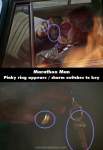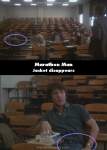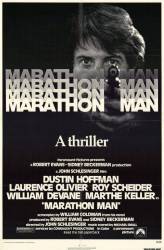
Continuity mistake: In the scene where the German and Jewish drivers are arguing, there is a corner establishment visible in the background with a sign that reads "wash." In certain shots, a "going out of business" sign is visible in the storefront, while in other shots, with close-ups of two passers-by observing the argument, the same corner establishment is visible without the "going out of business" sign.

Continuity mistake: In Uruguay, when the woman puts Christian Szell's folded shirts in the drawer, the camera pans toward the photographs on the dresser. There's an unframed photo of his brother Klaus in the closeup, but it's a different photo in the next wide shot. (00:38:25)

Continuity mistake: When the crash occurs, Klaus pulls out the key on a keychain. In the first shot, Klaus is not wearing a pinky ring on his right hand while holding the key with the round charm dangling, but in the closeup Klaus is now wearing a pinky ring on his right hand and is instead holding the keychain charm, with the key dangling. (00:08:15)

Continuity mistake: When Levy arrives at Professor Biesenthal's seminar he sits down placing his jacket on his lap. When asked about his thesis, his seating arrangement changes. The jacket appears folded on the chair to his right and the pencil he holds, disappears. (00:23:00)






Answer: The diamonds were "blood money" that were stolen at the expense of many Jewish lives during the holocaust and also resulted in Babe's brother, "Doc" being murdered. For that reason, Babe would not want them, nor would he allow others to profit from them. Szell needed to risk being recognized in New York in order to retrieve the entire cache of diamonds from the bank safe deposit box after his brother, Klaus, was killed. Klaus would retrieve as many diamonds as Szell needed to sell to support himself in South America. Once Klaus was dead, no-one else could gain access to them for Szell, or if they could, probably would have stolen them.
raywest ★